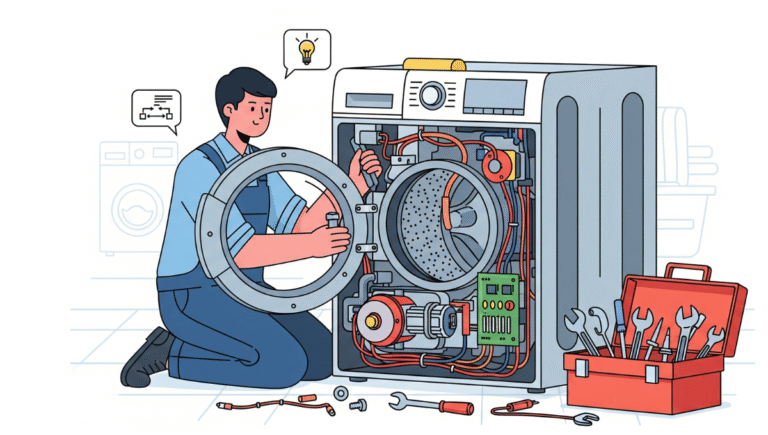Introduction
Washing machines have become an essential part of modern homes, saving time and effort in daily laundry tasks. But like all appliances, they can break down or show signs of wear over time. Knowing how washing machine repair (reparación de lavadoras) works can save you money, extend the lifespan of your appliance, and give you the confidence to fix minor issues yourself.
This guide explains everything—from basic troubleshooting to advanced repairs—so you can understand, maintain, and repair your washing machine effectively.
Common Signs Your Washing Machine Needs Repair
Before diving into repairs, it’s important to recognize when your washing machine needs attention. Some of the most common issues include:
-
The machine won’t start
-
Water not filling or draining properly
-
Unusual noises or vibrations
-
The drum not spinning
-
Water leakage
-
Bad odor inside the drum
Identifying the problem early can prevent bigger and more costly repairs later.
Basic Washing Machine Repairs (For Beginners)
-
Check the Power Supply
In some cases, the problem may be nothing more than an unplugged cord or a circuit breaker that has shut off. Always ensure the power connection is secure before starting repairs. -
Inspect the Hoses
If water is not filling or draining, check the inlet and outlet hoses for blockages or leaks. Cleaning or replacing them is often enough. -
Clean the Filter
A clogged filter can cause draining issues and strange odors. Most machines have a small filter at the bottom front that can be easily cleaned. -
Balance the Machine
If your washing machine vibrates excessively, make sure it’s placed on a level surface. Adjust the feet to stabilize it. -
Use the Right Detergent
Using too much or the wrong type of detergent can cause buildup and performance issues. Always follow the manufacturer’s recommendations.
Intermediate Repairs (For Confident DIYers)
-
Fixing Drainage Problems
-
Remove and clean the pump filter.
-
Check the drain hose for kinks or blockages.
-
A malfunctioning pump motor might require being replaced to restore proper function.
-
-
Dealing with Spinning Issues
-
A broken drive belt could prevent the drum from spinning.
-
Replacing the belt is usually straightforward with basic tools.
-
-
Solving Noise Problems
-
A heavy banging noise often signals that the shock absorbers or drum bearings are worn and need attention.
-
Replacing these parts can reduce vibration and extend the life of your washer.
-
Advanced Fixes (For Experienced Hands or Professionals)
-
Replacing the Motor
If the washer fails to spin or agitate, it may be due to a burned-out motor. Replacing it requires electrical knowledge and should be done carefully. -
Fixing Electronic Control Boards
Modern washing machines have computerized control boards. When the washer fails to react to commands, the problem is often linked to a defective control board. These are complex parts best left to professionals. -
Bearing Replacement
Drum bearings can wear out over time, causing grinding noises. Replacing them involves disassembling the drum—a task that requires skill and patience. -
Seal Replacement
Water leaks often come from damaged door seals. Replacing them requires removing the front panel and carefully fitting a new seal.
Preventive Maintenance Tips
To minimize future repairs, follow these simple practices:
-
Clean the drum regularly to avoid mold and bad smells.
-
Perform regular cleaning cycles using hot water combined with vinegar or specialized washing machine cleaners.
-
Avoid overfilling the washer, as excess laundry strains both the motor and the drum.
-
Check hoses and seals every few months for signs of wear.
-
Use surge protectors to protect electronic components from power fluctuations.
When to Call a Professional
While basic and intermediate repairs can often be done at home, advanced fixes involving motors, electronics, or major leaks should be left to certified technicians. Professional repair ensures safety and preserves your appliance warranty.
Conclusion
Reparación de lavadoras is not as intimidating as it sounds. With a basic understanding of how washing machines work, you can easily fix common issues like clogged filters, blocked hoses, or unbalanced drums. For more complex problems, such as motor or control board failures, professional help is the best choice.
By learning both basic maintenance and advanced repair techniques, you can extend the lifespan of your washing machine, save money, and keep your laundry routine running smoothly.
